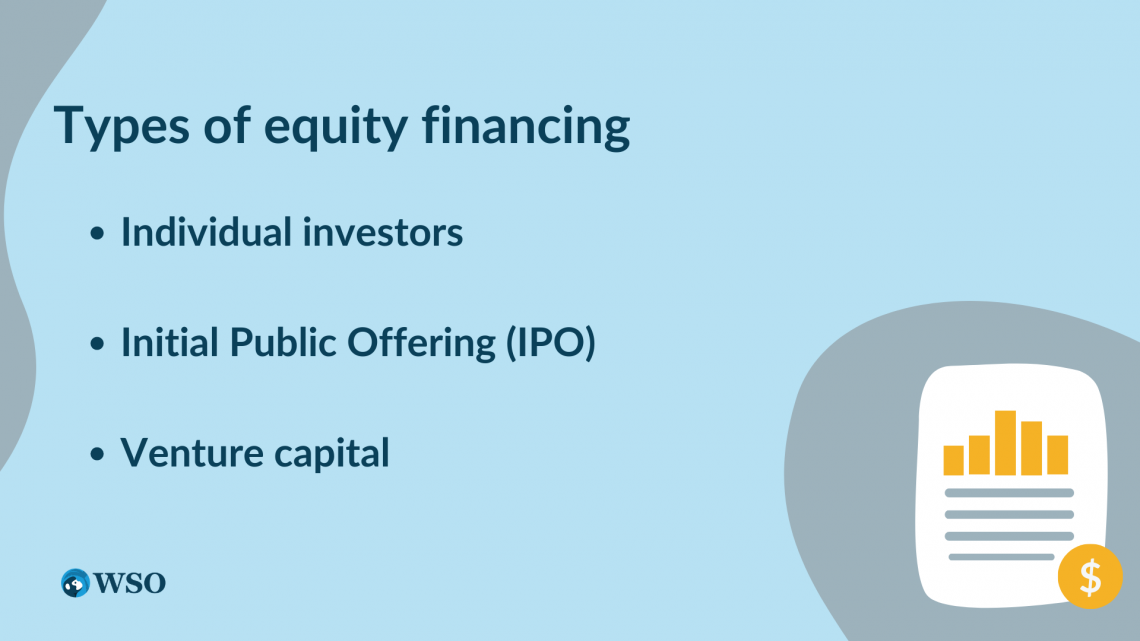Acquisition Finance Structures
The variety of sources used for acquiring capital to fund an acquisition.
What is Acquisition Finance?
Acquisition finance is the variety of sources used for acquiring capital to fund an acquisition. It is typically a complicated process that requires thorough planning and analysis primarily because of the many variations of financing structures.

After mentioning that acquisition financing structures usually come from many different sources, one of the main goals in acquisition finance is to create the proper mix of financing. This is done to create the lowest cost of capital while receiving funds.
Some common acquisition structures include:
1. Stock swap transaction:
When companies own publicly traded stock, the acquirer exchanges its stock with the target company. This transaction is very common with private companies, as the target company's owners will have a say in the combined entity.
2. Leveraged buyout (LBO):
LBOs are considered a mix of debt and equity. It is heavily used in acquisition finance and is one of the most popular techniques used in the industry. In an LBO, it is important to remember that the assets of both the acquirer and the target company are used as collateral.
3. Cash
In an all-cash acquisition deal, shares of a company are exchanged for cash. These transactions usually occur when the acquired company is much smaller and has far lower cash reserves than the acquirer.
These are only a few acquisition structures. The process begins with the identification of a target company and the negotiation of a purchase agreement. Once the purchase agreement is in place, the acquirer must get the necessary financing to complete the acquisition.
That said, the structure choice depends on the deal's specific circumstances and the parties involved. The acquiring company must consider each option's advantages and disadvantages before deciding its structure.
Key Takeaways
- Acquisition finance is the variety of sources for acquiring capital to fund an acquisition. It is typically a complicated process that requires thorough planning and analysis primarily because of the many variations of financing structures.
- There are many financing options for companies looking to acquire another company. The most common options are a line of credit or a traditional loan.
- There are many options when it comes to debt financing. The alternatives listed below are the most typical and are fully debt-financed. However, other choices are available based on the deal's specifics.
- Equity financing is the sale of shares to generate capital. By selling shares, a company will give up ownership in the company in exchange for cash.
- Companies decide to raise money for several reasons, such as the need to fund a long-term project to promote growth.
- When a company is going to consider an acquisition, a few components should be considered beforehand. Such factors include cash vs. stock mixture, accounting implications, tax treatment, and synergies.
How acquisition financing works
There are many financing options available for companies seeking to acquire another company. Common choices in the industry include a line of credit or a traditional loan. Companies that seek capital in the form of credit obtain it from traditional banks or lending services.

The best option would be a traditional loan with favorable rates to help smaller companies grow their operations. However, a smaller company that may need the help of a private lender should expect higher interest rate charges when compared to banks.
After applying for a loan, a bank can be more inclined to approve acquisition financing if the target company has a consistent revenue stream, steady or growing earnings, and valuable assets in the chance of default.
NOTE
A bank is less likely to approve financing if the target company has a large balance of receivables as opposed to cash flow generated.
Types of Acquisition Finance Structures
We have already covered a few acquisition structures, such as LBOs, stock swap transactions, and cash. That said, acquisition financing can take many forms, but it is divided into two main categories: debt financing and equity financing.

Debt financing is one of the most popular financing methods. This is because many companies have a difficult time paying out cash, or their balance sheets will not allow it.
Debt is also considered one of the cheapest options. Therefore, when a bank decides to provide the funds for an acquisition, they will analyze the financial health of the target company and the acquirer by looking at line items such as:
- Cash flow: This is the amount of cash generated and spent by a company. The cash flow statement helps indicate the creditworthiness of a company and the firm's overall liquidity.
- Profits: This is the amount the company has earned after subtracting expenses from revenue. Do not confuse profits with net income, as net income includes line items such as taxes and interest payments.
- Liabilities: This is what the company already owns in terms of accounts payable, purchases made on credit, and debt payments.
By comparison, equity financing is typically used to acquire companies in unstable industries with unreliable cash flows. Equity financing is also more flexible when compared to its debt counterpart because of the absence of periodic payments.
Types Of Debt Financing
There are many options for debt financing. The alternatives listed below are the most typical and are fully debt-financed. However, other choices are available based on the deal's specifics.

1. Bank loans:
A bank loan occurs when banks or financial institutions lend money to another company. The recipient of the loan incurs a debt and is liable for interest payments until it is repaid.
There are numerous types of loan classifications. For example, it can be a secured loan tied to a company's assets or an unsecured loan with no collateral, such as a credit card.
Other types include
- Term loans: A term loan is an agreement between a borrower and a lender, where the cash is given upfront, and the money will be repaid over a series of payments within a given time frame, also known as a term.
- Revolving loans: These loans are very similar to credit cards; however, they are used by large corporations. Revolving loans allow the borrower to withdraw funds and repay the loan over time.
- Cash flow loans: This type of loan involves the expected cash flows of the borrower to be used as collateral in the chance of default.
Bonds and debentures are common debt instruments that the government and corporate establishments issue to raise capital.
Bonds can be secured or unsecured, while debentures are always unsecured. That said, both instrument holders will receive interest payments.
3. Factoring:
Factoring is a debt instrument used for short-term issues. It involves companies selling their accounts receivables to a third party to obtain short-term liquidity. The third party will pay the company the equivalent amount minus the fees or commission.
Depending on the particulars of the transaction, each method of debt financing offers advantages and disadvantages of its own.
Bank loans and bond issuances might be ideal for a well-established business with a strong credit rating. Also, factoring is best used when corporations have established invoicing methods.

One of the main benefits of debt financing is that the lender will not own the company. This allows the company's upper management receiving the loan to stay in control and make decisions for the betterment of shareholders.
Debt financing does, however, have some disadvantages. The fact that the company will have to repay the loan with interest can financially strain companies with unsteady cash flows. Failure to pay back the loan will lead to default and potentially bankruptcy.
In general, debt financing can be useful for businesses to raise funds. Still, it's important that owners thoroughly consider the advantages and disadvantages of debt financing before making a decision.
Types Of Equity Financing
Equity financing is the sale of shares to generate capital. By selling shares, a company will give up ownership in the company in exchange for cash. Companies decide to raise money for several reasons, such as the need to fund a long-term project to promote growth.

Equity financing comes from several sources, such as a founder's friends and family, professional investors, venture capitalists, or even through an initial public offering (IPO). But first, let us look at some forms of equity financing.
1. Individual investors
These are often the friends, families, and colleagues of the entrepreneur who decided to start the company.
Individual investors have less money when compared to financial institutions, which is why it is important to have many of them to reach financing goals. However, some of them also have no experience in the industry and will lack the ability to guide the company.
2. Initial public offering
Due to the expenses, time, and effort that IPOs require, this financing usually occurs in the later stages of a company's development. A more well-established business that has grown through the years can raise funds through an IPO.
Furthermore, IPO investors expect much less control than their venture capital and angel investor counterparts. With the cash raised from an IPO, companies can fund long-term projects, make an acquisition, or pay off debt.
These are investors who specialize in funding startups or early-stage companies that believe in having extreme growth potential. They will also demand a lot of ownership in the company but will offer many financial resources and connections.
One of the key advantages of equity financing is the ability to raise large amounts of capital without incurring debt and interest payments. As a company, you will not pay back investors in the form of interest but rather capital gains.

Additionally, since no interest payments are needed, there are no monthly payments. However, if the company decides to issue dividends, it will have to pay out a percentage of its earnings every quarter month to its shareholders.
Equity financing does, however, have some disadvantages. One of the most significant disadvantages is that by selling shares, equity investors will own a portion of your business, which could result in a loss of influence over particular decisions.
Equity financing can be a helpful tool for businesses to obtain funds for working capital needs or even an acquisition. But, it's crucial for business owners to thoroughly weigh the potential trade-offs before making a choice.
Factors to consider for an acquisition finance structure
When a company considers an acquisition, a few components should be evaluated beforehand. Such factors include cash vs. stock mixture, accounting implications, tax treatment, and synergies.

1. Cash Vs. Stock Mixture
The first item that should be figured out when discussing cash vs. stock mixture is how sellers get paid and buyers will pay. These compensation methods can become very complex as companies can decide to pay in cash, stock, debt, and sometimes a combination of all three.
2. Accounting Implications
Next on the agenda will be a discussion regarding the impact of the purchase on the financial earnings of the acquirer. A merger model will analyze the financials of the two companies.
A merger model looks to determine the joint entity's earnings per share (EPS). An increase in EPS is called accretion, while a decrease is called dilution.
After a merger or acquisition, many financial and tax reports will have to be released. One of the key processes needed in acquisition accounting is purchase price allocation.
Purchase price allocation is the issuance of the deal's assets and liabilities. The distribution will mark the fair market value of the acquired assets and liabilities.
Note
The excess is known as goodwill if the purchase price exceeds the FMV.
3. Tax Treatment
With the sale of assets and stock, the tax treatment varies. When it comes to the sale of assets, they are much more favorable, in terms of taxes, to buyers as the assets will receive higher depreciation deductions, which will lower the cash taxes paid by the buyer.
During a stock sale, taxes will be minimized if the transaction is treated as a stock sale instead of an asset sale. This is because the seller will pay an immediate tax on its gains; this is not a favorable option for the seller.
4. Synergies
Finally, synergies are also known as the value-added when two companies decide to merge, allowing new opportunities for the combined entity. These opportunities would only exist if the companies remained independent.
Reviewed and edited by Parul Gupta | LinkedIn
Free Resources
To continue learning and advancing your career, check out these additional helpful WSO resources:









or Want to Sign up with your social account?